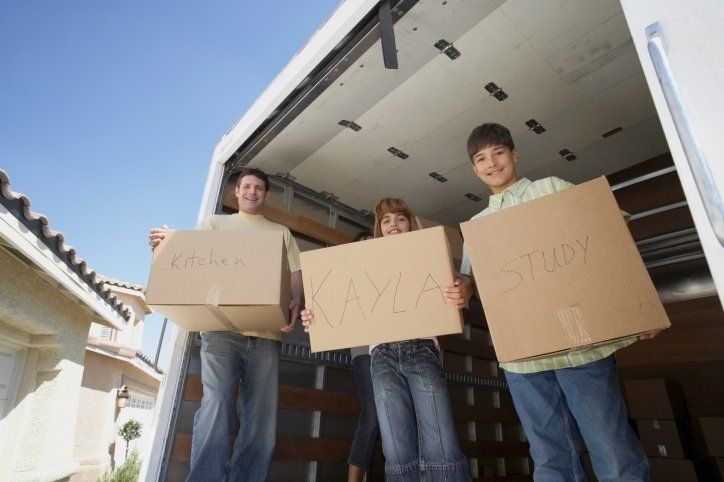What Is a Starter Home?
You’ve heard the term, but do you know what a starter home really is, and what to look for in your hunt for one? We’ll explain.
Looking to buy your first home? You’ve likely heard the advice that there’s not a ton of pressure when you first enter the housing market. After all, you’re just looking for a “starter home,” right? Your pick won’t be the place you live forever, so why stress too much about it? Maybe so, maybe not, is what experts say about the modern house-buying cycle.
For many buyers, that first home—the starter home—marks a turning point in their lives where they stop paying rent and start investing in a property that can help build generational wealth over time.
“For most people, that is where wealth begins,” says Jack Gross, president and CEO at Better Homes and Gardens Real Estate Cassidon Realty. “In some markets, that could be a one- or two-bedroom apartment condo. In other markets that could be a townhome or a small single detached ranch. In most cases it’s a home that is under the median price point for the local market.”
Starter homes have different definitions for different people. In this article, we’ll take a look at the features you should look for in a starter home—and the ones you can skip as you hunt for the perfect property.
Defining the Starter Home
When buyers think of starter homes, they typically think small, affordable, and something they’ll eventually grow out of. In general, though, a starter home might just be a property you have to make some compromises about if you want to get into the housing market as a first-time buyer.
“A starter home is a house that is typically the first that a person can afford to buy,” says Alex Capozzolo, co-founder of Brotherly Love Real Estate. “Starter homes are generally one- or two-bed properties. Buyers with limited financial means generally consider starter homes. They might also be a choice for people who are trying to save money for an upgrade to a better neighborhood or a bigger house, for example.”
Typically, a starter home is one that lasts the buyer a short amount of time before they look for their next home or their forever home.
“On average, a starter home owner might keep the house for 5 to 7 years before selling,” Capozzolo says. “However, this is also dependent on factors like mortgage, income, housing inventory, et cetera.”
In rare cases, your starter home could be your forever home, says Stephanie LoVerde, agent at Baird & Warner in Chicago.
“There are buyers out there who can afford to ‘skip’ a step and progress from renting or owning a smaller condo to something more extravagant that meets their immediate as well as anticipated needs,” she says.
And if you find yourself totally happy to stay in your starter home long-term, that’s fine, too.
“A property that a buyer may look at as more of a shorter-term ‘starter’ home could end up being their forever home, depending on their living situation and changing needs,” LoVerde says. “Maybe their family doesn’t grow as large as anticipated, or they fall in love with the location or school district and decide to stay put, renovate, and build additions.”
What to Look for in a Starter Home
As you shop for your first home, Capozzolo says to focus on a few key features, beginning with the floor plan. You’ll want something that meets your current needs, but you don’t necessarily need extra bedrooms or floors to grow into if you feel confident that you’ll be able to move into a larger house as your family grows. In addition, make sure your commute to work and other key locations is manageable. Don’t stress if you have to sacrifice your ideal layout and location a bit if the goal is simply to enter the housing market.
“The beauty of starter homes is that they should take the least money from you as possible,” Capozzolo says.
A starter home might be something that is move-in ready and easy to maintain, or it might require some elbow grease.
“For some buyers, a smart long-term housing strategy might be to buy something on the lower side of their budget and make improvements,” LoVerde says. “Hopefully, they will gain equity from the improvements and be able to personally enjoy those upgrades while owning the property.”
Many buyers also think of their starter homes as homes that will ultimately appreciate in value and earn them a little money when they’re ready to move onto the next property. If that’s the case, you might be willing to make a few improvements.
“Conversely, some buyers don’t want the hassle of lifting a hammer or picking out a shade of paint, and they are willing to pay for a home that is move-in ready and aligned to their tastes—which is fine, but the upwards potential may not be as great,” LoVerde says. “Everyone is different.”
Are You Ready for a Starter Home?
If you’re itching for more space or tired of jumping from one apartment to the next and looking to settle down somewhere where to plant roots and nest, it could be time to buy.
“In almost all cases, it is prudent to be an owner and not a renter,” Gross says. “When you are renting, you are paying down someone else’s principal on their mortgage. The landlord benefits from the appreciation, depreciation.”
Gross says that, in most cases, those who plan to stay in an area for at least two years will benefit from buying vs. renting. There are rent vs. mortgage calculators online that can help you get a rough estimate of whether renting or buying is the smarter move, money-wise, in your area.
From there, you’ll want to figure out how much home you can afford by taking a look at your monthly expenses, the tax advantages of buying, and whether the homes you’re considering need repairs (and more money) in the immediate future. You’ll also want to calculate how much a down payment might be, and whether you have enough money saved up.
“These are all questions one should ask themselves and consider and make sure you are asking the questions to a qualified professional, Realtor, accountant and mortgage lender,” Gross says.
Capozzolo says many first-time buyers opt for less house than they can afford to allow themselves some wiggle room as they tackle their largest financial investment to date.
“When buying a starter home, some buyers get pre-approved for a mortgage and then shop based on how much they can borrow. If you do not qualify for a conventional mortgage, FHA loans are a reliable choice,” he says. “When it comes to starter homes, you might want to spend less than you are approved for. Taking on a larger mortgage might cause financial difficulties moving forward.”
Source: BHG.com
Dusty Rhodes Properties is the Best Realtor in Myrtle Beach! We do everything in our power to help you find the home of your dreams. With experience, expertise, and passion, we are the perfect partner for you in Myrtle Beach, South Carolina. We love what we do and it shows. With more than 22 years of experience in the field, we know our industry like the back of our hands. There’s no challenge too big or too small, and we dedicate our utmost energy to every project we take on. We search thousands of the active and new listings from Aynor, Carolina Forest, Conway, Garden City Beach, Longs, Loris, Murrells Inlet, Myrtle Beach, North Myrtle Beach, Pawleys Island, and Surfside Beach real estate listings to find the hottest deals just for you!
Share





